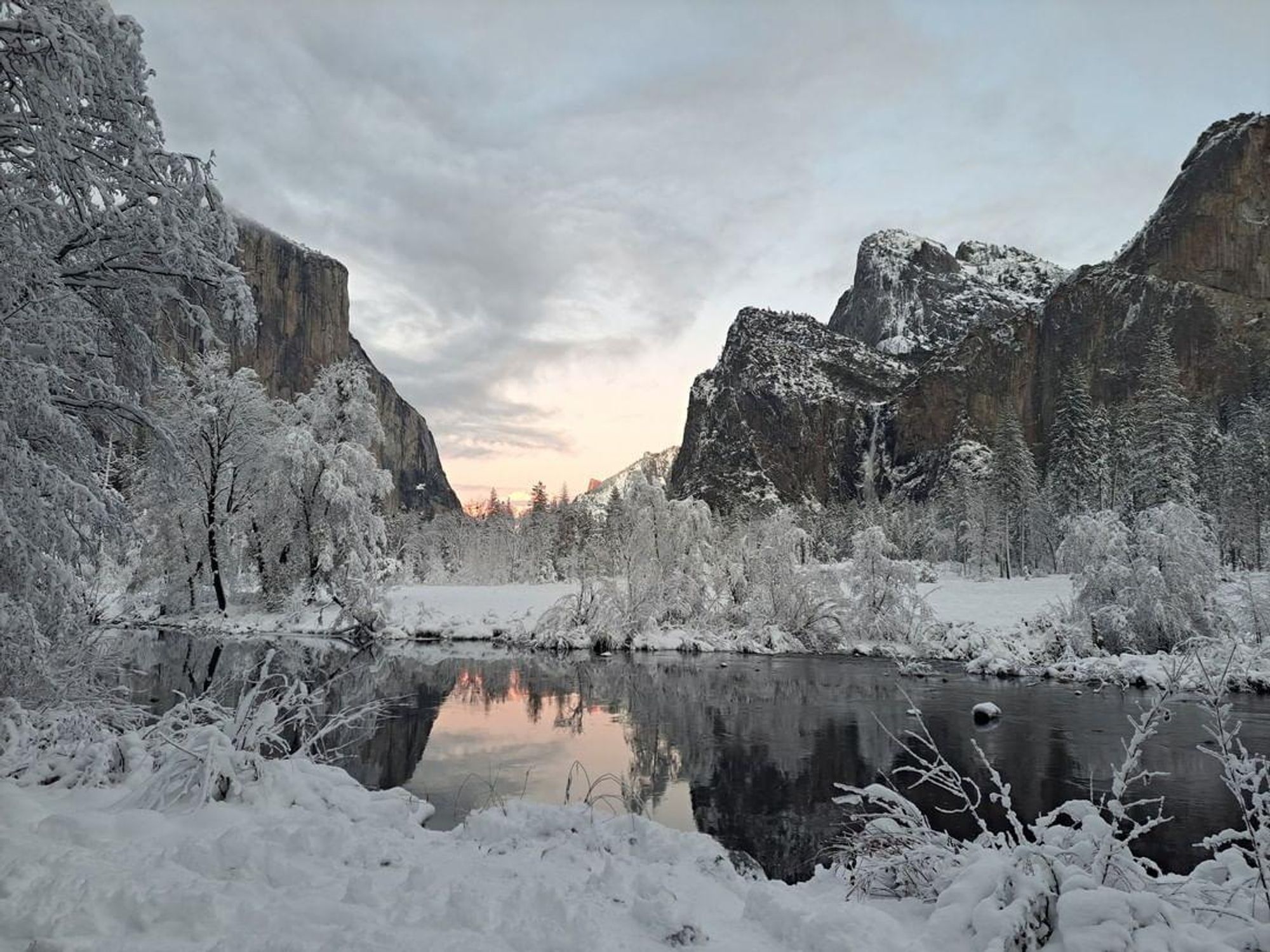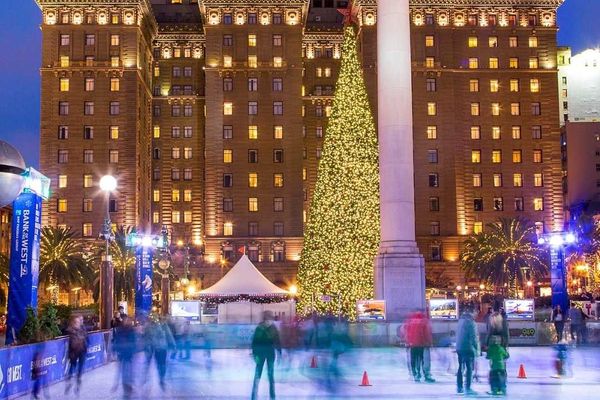While everyone you know is fighting traffic up to Tahoe this winter, consider a snowy alternative: Yosemite.
Sure, you won’t be scaling Half Dome this time of year, but winter in Yosemite National Park offers a different kind of magic—a meditative, real-life winter wonderland that, in many parts, feels completely void of people.
Visiting in winter also requires some strategic planning. Here’s how to prep for a winter weekend at California’s most beloved national park.
Two Words for Planning Your Trip: Be flexible.
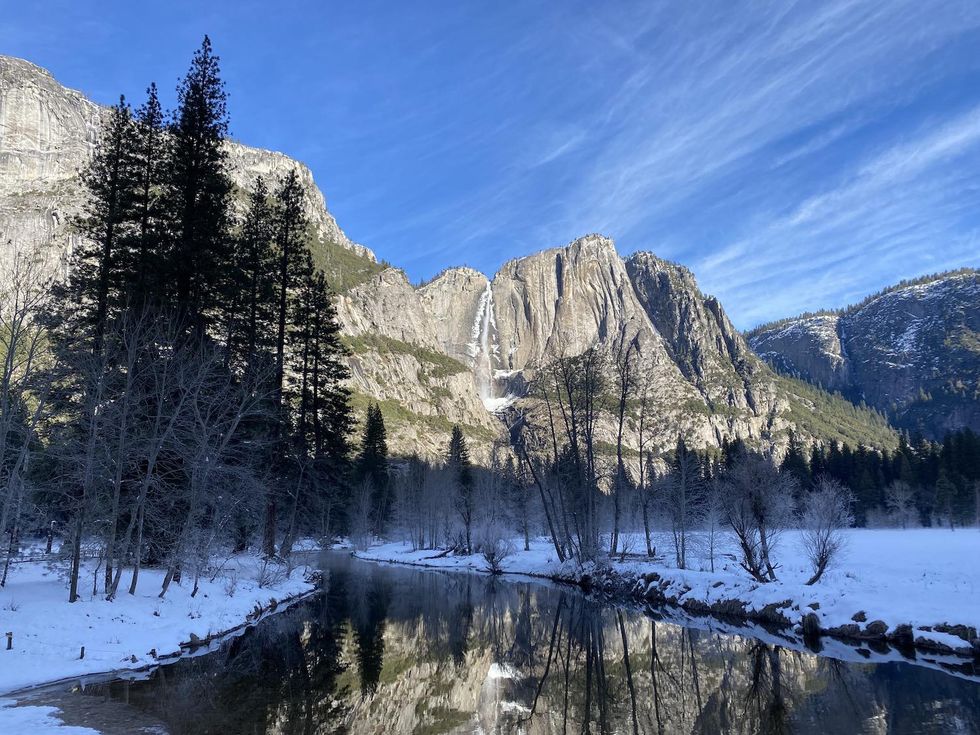
(Jess Lander)
If you follow the weather, you’ll understand why it’s in your best interest to plan your trip around incoming winter storms. This requires keeping your dates flexible, which is much easier to do in the off-season anyway—plus, hotel rooms are discounted this time of year.
We managed to time our trip perfectly between two storms, which made for a seamless drive each way, and while we needed to be careful on some icy stretches of road, we ultimately didn’t need our chains. Conditions can also change quickly, so check the weather regularly (I was surprised to find that we had cell service in many areas of the park). We were gifted an extra half day, but it easily could have gone the other way.
Hikes + Sights at Yosemite in Winter
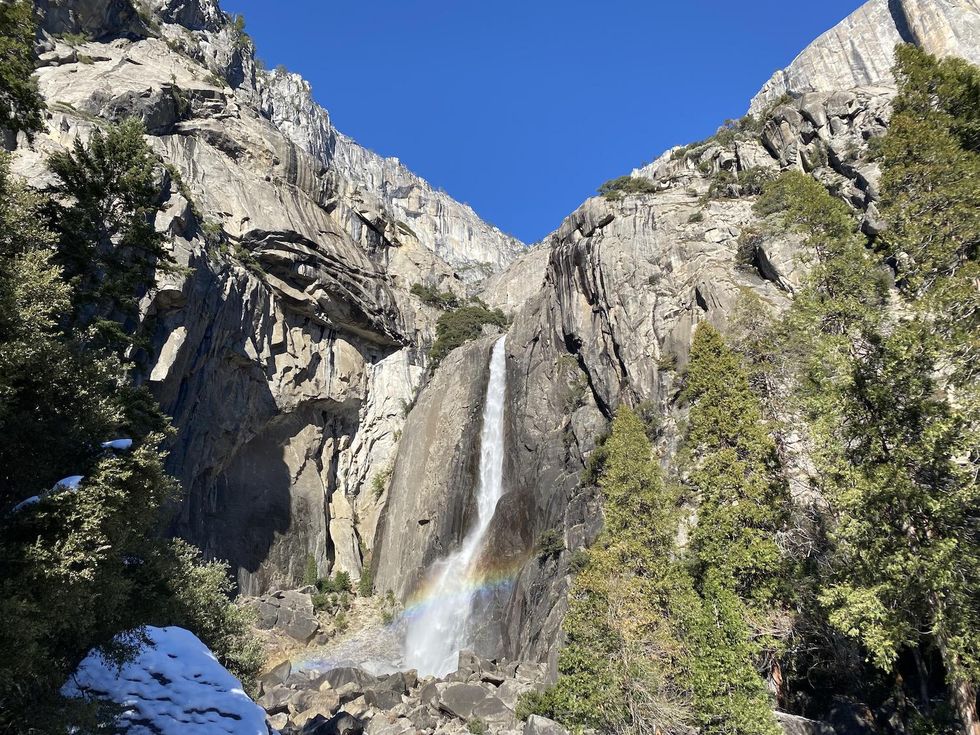
Lower Yosemite Falls.
(Jess Lander)
This time of year, advance reservations are required to enter Yosemite only during weekends in February, when the annual fiery phenomenon at Horsetail Fall draws larger crowds than usual. The park's $35 entrance fee will you get park access for up to seven days.
The biggest drawback of Yosemite in the winter is that most of the more rigorous trails are closed and impassable due to snow and ice. But there’s still plenty of hiking to do, albeit with limited elevation gain.
The mostly-flat Valley Loop Trail goes a full 11 miles around the valley floor of Yosemite, passing through snowy meadows, under cliffs, and along the Merced River and its snow-capped rocks. You don’t have to do the whole thing, but can instead drive, park, and hop in and out at certain points, like Lower Yosemite Falls, which was still pumping a good deal of water when we went just before Christmas. From the falls, continue on through an icy forest and across the road to Cook’s Meadow. Loop around the Meadow (here, we caught several families having good old fashioned snowball fights) for a great view of Half Dome and both Upper and Lower Yosemite Falls.
Another easy hike through snowy solitude is Mirror Lake, which we hiked to from The Ahwahnee. It was about a three-mile trek round trip and we only saw a few other souls along the way. Once we got there, some sections of the lake were so frozen that it was actually safe to walk on, and we did so at our own risk.
The most challenging hike we did was to the Vernal Fall Footbridge. Though also only about three miles round trip, this trail was extremely icy and included some moderate climbs that had us nearly sliding backwards and off the trail. We passed several groups that had actually decided to turn back before reaching the footbridge, but we pressed on until we reached our destination (the path to the top of Vernal Fall was closed, unfortunately). I noticed that, on the way back, the ice was much slushier and easier to navigate, so it could pay off to wait until late morning, when the sun starts to warm everything up.
Before you leave, drive a bit up from the valley to the east end of Wawona Tunnel on Hwy 41 and take in the sights at Tunnel View, probably the most famous panorama in the park featuring killer views of El Capitan, Half Dome, and Bridalveil Fall at once. Don't forget to stop by The Ahwahnee to warm up with some peppermint schnapps hot chocolate.
Snowshoeing & Cross Country Skiing in Yosemite
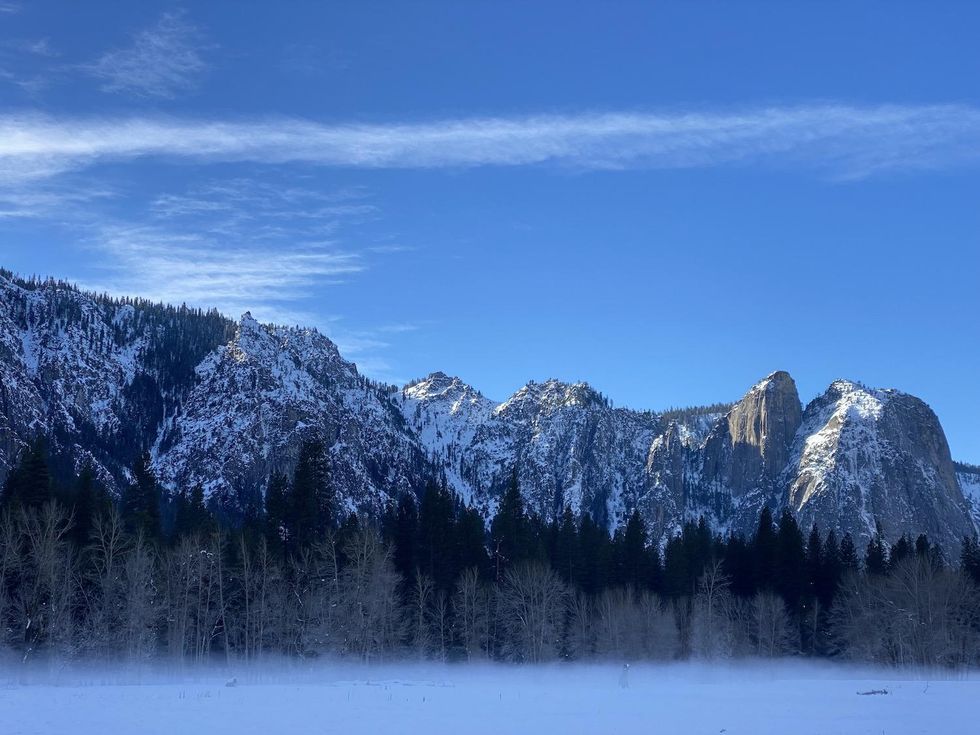
(Jess Lander)
Considering the amount of snow the Sierras have already received this winter, it’s the perfect year for snowshoeing and cross country skiing at Yosemite. The easiest way to find official routes is from the Badger Pass Ski Area—here you can also rent equipment and go downhill skiing and snowboarding—but you should check out Mariposa Grove and Crane Flat, too. If it’s your first time, you might consider joining a guided snowshoe trek with National Park Service rangers, or through either the Yosemite Conservancy or Yosemite Mountaineering School. Experts can book an overnight ski hut for an adventurous backpacking trip through the snow.
Schedule a Spa Day in Yosemite
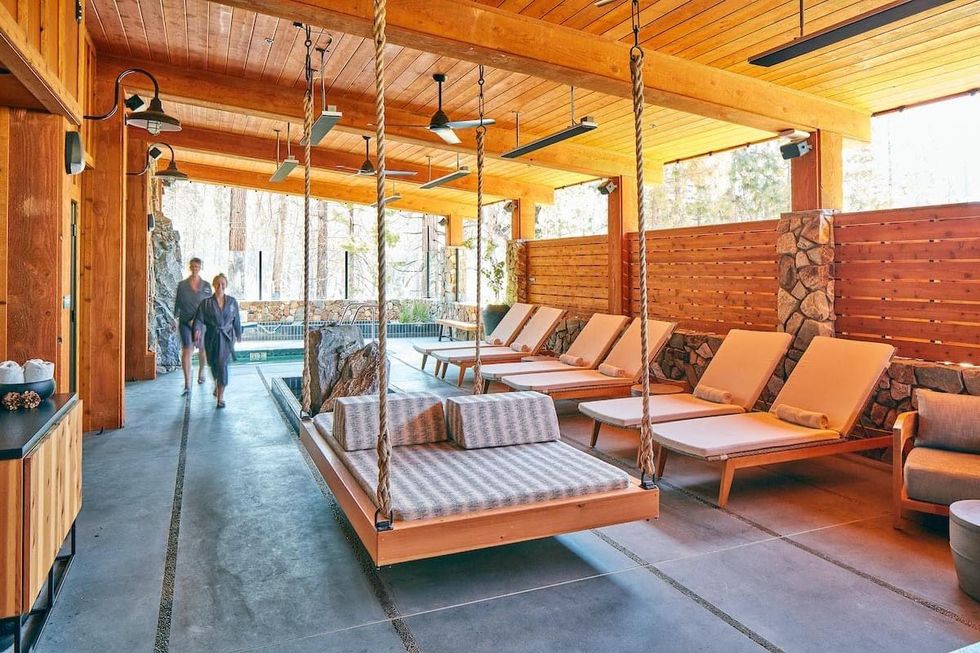
I was not prepared for the level of head-to-toe soreness I felt after the first day of hiking in snow and on ice to the Vernal Fall Footbridge. Thankfully, Rush Creek Lodge offers a $60 day pass for its indoor/outdoor spa. From 8am to 10pm, you can take advantage of the Himalayan salt block dry sauna, aromatherapy steam room, cool mist showers, warm waterfall coves, granite jacuzzi, and electric heated loungers. We spent hours bouncing around the various heavenly experiences and woke up feeling good as new for more hiking the following morning.
What to Pack for a Winter Trip to Yosemite
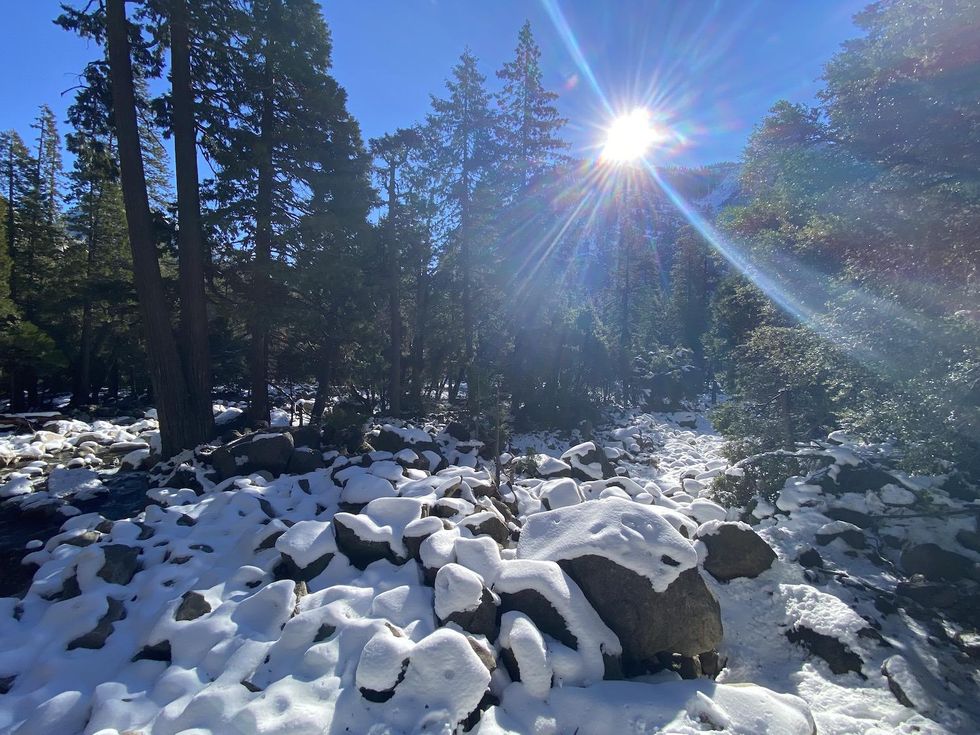
(Jess Lander)
The most obvious item you’ll need for a winter Yosemite trip is snow chains for your tires: Depending on the road conditions, they’ll be required to enter the park. The good news is that if you don’t need them, you can return them later.
Pack a hat, gloves, and more warm-weather layers than you think you’ll need. On the first day of a recent trip, my husband and I actually underestimated the cold based on temperatures outside of the park at Rush Creek Lodge, where we booked a cozy villa. Once we got to Yosemite Valley, the temp had dropped 10 to 15 degrees (hovering in the mid-to-high 20s), and I was kicking myself for leaving my warmest jacket back in the room.
For hiking, good shoes are critical as you’ll often be trekking through deep snow and atop extremely slippery ice (yes, even if you’re simply strolling around the valley). I saw too many ill-advised tourists attempting to get around in standard sneakers, trying and failing to find their legs. Even our proper hiking shoes didn’t have quite enough traction, but I noticed a handful of hikers confidently navigating the ice like Olympic athletes thanks to traction systems made out of coils or spikes that they had attached to their shoes. They work just like chains on tires and you can get them at most adventure gear stores like REI. A walking stick could certainly help, too, and when in doubt, try to step in snowy patches versus ice.
I’d also suggest bringing a large thermos filled with hot coffee. It’ll go a long way in bringing your body temperature back to normal in between hikes and even quick jumps out of the car for picture taking.



